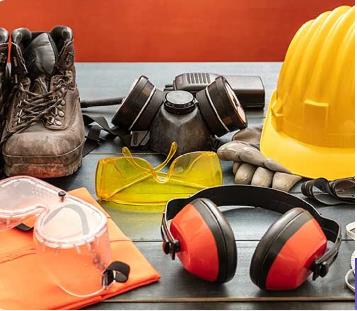When it comes to protecting workers in hazardous environments, choosing the right gear is critical. Many businesses may confuse personal protective equipments (PPE) with standard gear, but the two are distinct in terms of their design, purpose, and effectiveness. While both aim to safeguard workers, PPE is specifically tailored to meet the needs of workers exposed to dangerous conditions.
What is Personal Protective Equipment (PPE)?
Personal protective equipment (PPE) refers to a broad range of gear designed to protect workers from workplace hazards that could cause injury or illness. PPE is essential for jobs that expose individuals to specific risks such as chemicals, falling objects, electrical hazards, or extreme temperatures.
Types of Personal Protective Equipment
Personal protective equipment includes a wide variety of products, such as:
- Head Protection: Helmets, hard hats, or bump caps designed to protect from falling objects or head injuries.
- Eye and Face Protection: Goggles, face shields, or safety glasses that guard against flying debris, chemical splashes, or intense light.
- Respiratory Protection: Masks or respirators to protect workers from inhaling harmful substances like dust, fumes, or gases.
- Hearing Protection: Earplugs or earmuffs to reduce exposure to high noise levels.
- Hand and Arm Protection: Gloves and sleeves designed to protect against cuts, burns, or chemical exposure.
- Foot and Leg Protection: Safety boots or shoes that protect against heavy objects or slip-and-fall accidents.
What is Standard Gear?
Standard gear, on the other hand, refers to the general equipment or attire worn for day-to-day activities. Unlike PPE, standard gear is not specifically designed to protect workers from particular hazards but serves basic protective functions in less hazardous environments.
Examples of Standard Gear
- Work Uniforms: Regular clothing such as pants, shirts, and jackets.
- Safety Footwear: Non-slip shoes, though not always reinforced to protect from high-impact or puncture hazards.
- Visibility Clothing: High-visibility vests or jackets, which enhance visibility in low-light environments but may not be suited for extreme work conditions.
Key Differences Between PPE and Standard Gear
1. Purpose and Design
Personal protective equipment is designed to mitigate specific risks in hazardous environments. For instance, while standard gear may keep you comfortable and visible, PPE offers specialized protection for high-risk tasks, like welding or working with hazardous chemicals.
2. Customization for Risk Factors
PPE is tailored to particular industries and tasks, ensuring that it provides comprehensive protection. For example, a firefighter’s suit is made to withstand high temperatures and provide protection against smoke inhalation, whereas standard gear might not be equipped for such extreme environments.
3. Regulatory Standards
PPE is typically subject to strict regulatory standards set by governing bodies, such as OSHA (Occupational Safety and Health Administration) in the U.S., or the European Union's CE marking. Standard gear, however, generally doesn't need to comply with such rigorous safety regulations.
4. Durability and Performance
Since personal protective equipment is designed for safety in harsh environments, it is built to withstand extreme conditions. This means PPE usually has higher durability and performance ratings than standard gear, which may not hold up in dangerous situations.
Conclusion
The difference between personal protective equipment and standard gear lies in the purpose, design, and protection offered. While standard gear may be suitable for non-hazardous environments, PPE is specifically engineered to protect workers from a range of workplace hazards. By understanding the real differences, businesses can make better decisions when equipping their workers with the right gear for the job. Ultimately, investing in the right PPE can save lives, reduce injuries, and ensure that safety standards are upheld.





Comments